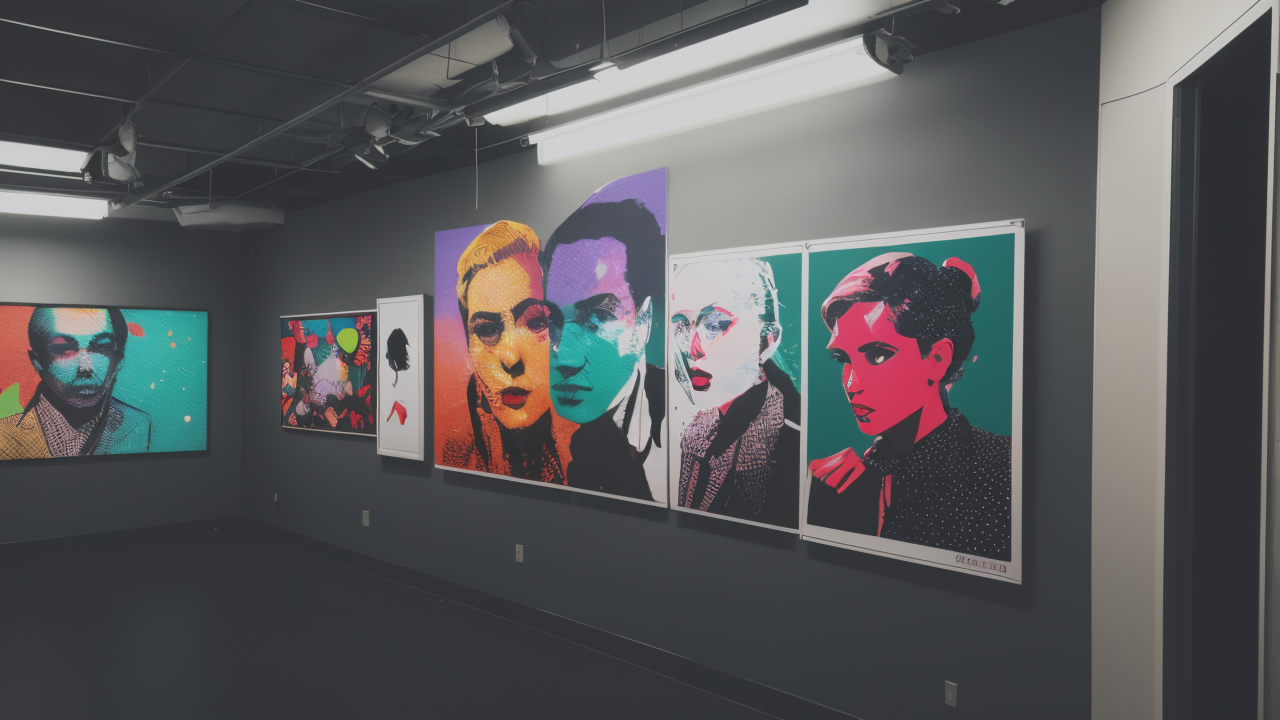
Andy Warhol's Legacy: Tracing the Roots of Contemporary Abstract Pop Art
The Origins of Abstract Pop Art in the United States
Pioneering Figures and Their Legacy
Abstract Pop Art emerged in the 1950s and 60s. It changed the art world forever. Andy Warhol led this movement. He was joined by other artists like Roy Lichtenstein and Jasper Johns.

Warhol's famous works include the Campbell's Soup Cans. He also made colorful prints of Marilyn Monroe. These pieces became icons of Pop Art. They showed everyday items as art.
Lichtenstein took inspiration from comic books. He made large paintings that looked like comic panels. His style used bold colors and thick black lines. It was very different from traditional art.
Johns used common symbols in his art. He painted flags and targets. His work made people think about what art could be. These artists changed how we see everyday objects.
Their legacy lives on today. Many modern artists still use their techniques. Pop Art has influenced advertising, design, and digital art. It continues to shape American visual culture.
The Intersection of Pop Culture and Modern Art
Pop Art brought together high art and popular culture. It used images from ads, movies, and comics. This was new and exciting. It made art more accessible to everyone.
Artists took inspiration from everyday life. They used bright colors and bold shapes. Their work was easy to understand. It spoke to people's daily experiences.
Pop Art often had a sense of humor. It could be playful or ironic. Sometimes it criticized consumer culture. Other times it celebrated it. This made people think about the world around them.
The movement used new techniques. Screen printing became popular. It allowed artists to make many copies of their work. This fit with ideas about mass production and consumerism.
Pop Art reflected American life in the 1960s. It showed the good and bad of consumer culture. It became a mirror for society. Its influence can still be seen in art and media today.
Key Factors Driving the Popularity of Abstract Pop Art
The Role of Social Media and Digital Platforms
Social media has given Pop Art new life. Platforms like Instagram are perfect for sharing bold, colorful art. Pop Art looks great on screens. This has helped it reach new audiences.

Artists can now share their work instantly. They don't need galleries or museums. Anyone can create and share Pop Art-inspired images. This has made the style more popular than ever.
Digital tools have opened up new possibilities. Artists can easily edit and manipulate images. They can create digital collages and animations. This has led to new forms of Pop Art.
Many social media users create their own Pop Art. They use filters and apps to make Pop Art-style images. This spreads the style even further. It keeps Pop Art relevant in the digital age.
Pop Art's bold style works well online. It stands out in crowded social media feeds. This makes it popular for branding and marketing. Many companies use Pop Art styles in their online presence.
The Influence of Pop Art on Modern Design and Branding
Pop Art has had a huge impact on design and branding. Many companies use Pop Art styles in their logos and ads. The bold colors and simple shapes are eye-catching.
Product packaging often uses Pop Art techniques. Bright colors and repeated patterns grab attention. This helps products stand out on shelves. It makes them more appealing to consumers.
Fashion designers take inspiration from Pop Art. Clothes and accessories feature Pop Art prints. This brings art into everyday life. It allows people to wear their favorite art styles.
Graphic design has been heavily influenced by Pop Art. Posters, album covers, and websites use Pop Art styles. The clean, bold look works well in many contexts. It's both modern and nostalgic.
Pop Art's influence can be seen in advertising everywhere. TV commercials, billboards, and online ads use Pop Art techniques. They grab attention and make products memorable.
The Future of Pop Art in American Art
Upcoming Trends in the Pop Art Scene
Pop Art continues to evolve. New technologies are creating exciting possibilities. Artists are exploring virtual and augmented reality. This adds new dimensions to Pop Art experiences.

Environmental themes are becoming more common. Artists use Pop Art to comment on climate change. They create works that make people think about consumption and waste.
Digital Pop Art is growing rapidly. Artists create works that only exist online. This challenges traditional ideas about art. It opens up new ways to create and share art.
Collaborations between artists and brands are increasing. This brings Pop Art to new audiences. It also raises questions about the relationship between art and commerce.
Some artists are combining Pop Art with other styles. They mix it with street art or abstract expressionism. This creates new and interesting forms of Pop Art. It keeps the style fresh and exciting.
The Significance of Pop Art in Contemporary Culture
Pop Art remains important in American culture. It influences how we see the world around us. The style is used in advertising, design, and social media. It's part of our daily visual language.
Pop Art's ability to comment on society is still valuable. Artists use it to explore issues like technology and identity. The art form adapts to new cultural trends. It helps us understand our changing world.
The accessibility of Pop Art is key to its ongoing relevance. It speaks to people from all backgrounds. This makes it a powerful form of communication. It can share ideas and emotions easily.
In a world full of images, Pop Art helps us make sense of what we see. It encourages us to look at familiar things in new ways. This makes it an important part of visual literacy.
Pop Art's legacy is secure in American culture. It continues to inspire new generations of artists and viewers. As long as popular culture evolves, Pop Art will too. It remains a vibrant and influential art movement.


